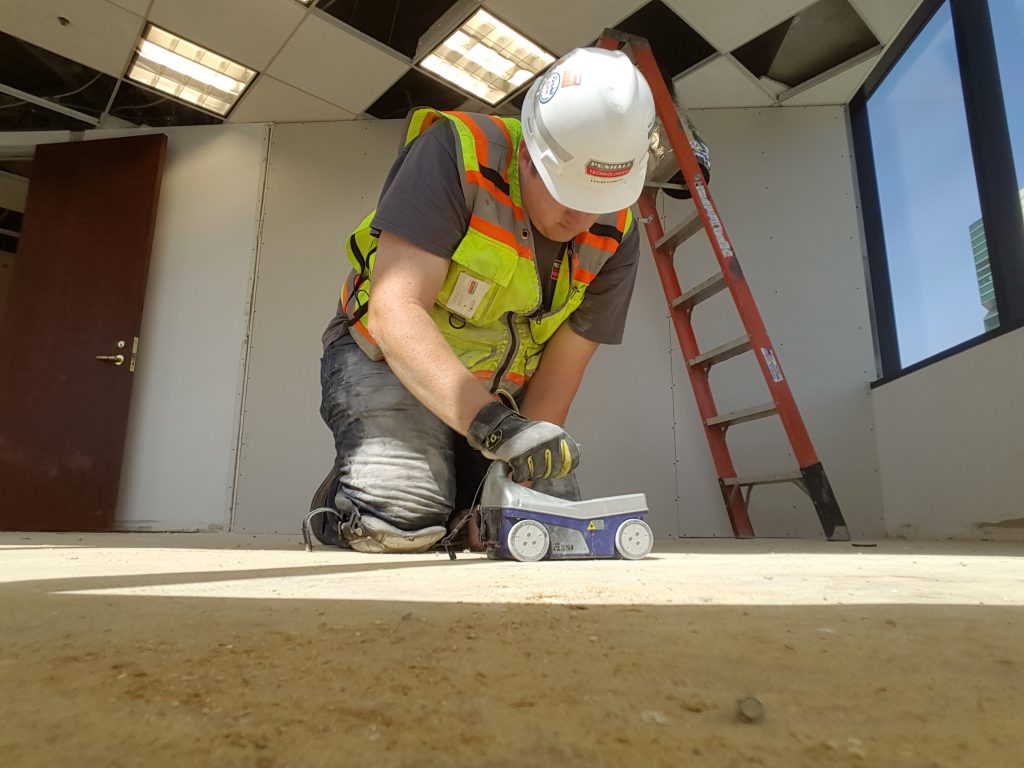Comprehensive Guide to Concrete Scanning Technologies
Comprehensive Guide to Concrete Scanning Technologies
Blog Article
Past the Surface Area: Leveraging Advanced Concrete Scanning Techniques for Unmatched Precision and Understanding
In the realm of construction and framework maintenance, the quest for precision and thoroughness is never-ending. Advanced concrete scanning techniques have actually emerged as vital tools in this pursuit, using a look below the surface to unveil a world of important insights. By utilizing advanced modern technologies, professionals can reveal abnormalities, examine the problem of concrete structures, and make notified decisions that shape the program of jobs. The ramifications of these techniques expand much beyond simple surface-level evaluations, promising a deepness of accuracy and understanding that is unequaled.
Value of Advanced Concrete Scanning
The value of making use of sophisticated concrete scanning techniques depends on the unrivaled accuracy they use for detecting sub-surface anomalies and making certain structural integrity. By employing advanced technologies such as ground-penetrating radar (GPR), electro-magnetic induction, and progressed finder imaging, construction professionals can dive beneath the surface of concrete frameworks with a level of accuracy that much exceeds conventional inspection methods. Concrete Scanning. These techniques allow the recognition of hidden dangers like rebar deterioration, spaces, channels, or post-tension wires that might compromise the security and security of a structure in time
Additionally, progressed concrete scanning supplies indispensable understandings into the total condition of a concrete aspect without the need for invasive steps, decreasing the risk of triggering damages during the analysis procedure. The capability to determine the precise area and depth of prospective concerns permits targeted repair services and maintenance, inevitably extending the life-span of the structure and maximizing its performance. Fundamentally, the relevance of sophisticated concrete scanning can not be overstated in the realm of building and construction and infrastructure maintenance, where accuracy and dependability are vital.
Types of Cutting-Edge Technologies

Anomalies and Defect Discovery

In enhancement to GPR, concrete scanning strategies like thermography and impact-echo testing are likewise efficient in finding defects and anomalies. By leveraging these sophisticated methods, experts can proactively attend to structural concerns, ensuring the long life and security of concrete structures.
Assessing Concrete Problem
Just how can designers accurately review the problem of concrete structures visit this site right here to guarantee their durability and security? Various innovative concrete scanning strategies are employed for this function. Ground-penetrating radar (GPR) is commonly utilized to analyze the internal framework of concrete, discovering gaps, cracks, and other abnormalities that may jeopardize its strength.
In addition, visual examination stays a basic component of concrete condition analysis. Engineers visually analyze the surface for indicators of degeneration, such as spalling, cracking, or staining. Integrating non-destructive testing techniques with visual inspections permits a comprehensive evaluation of concrete condition, allowing designers to recognize potential issues beforehand and implement timely upkeep or repair work. By leveraging these sophisticated strategies, engineers can make sure the long-term resilience and Going Here safety and security of concrete frameworks.
Enhancing Decision-Making Procedures
In the world of framework management, maximizing decision-making procedures is vital for ensuring the reliable upkeep and durability of concrete structures. Enhanced decision-making procedures in concrete management entail making use of innovative scanning strategies to collect detailed information on the problem of frameworks. By leveraging innovations such as ground-penetrating radar and 3D imaging, stakeholders can make informed choices concerning replacement, support, or repair work strategies.
These advanced scanning strategies give important understandings right into the interior make-up of concrete, determining possible problems such as spaces, splits, or deterioration that may not be visible externally. This level of in-depth information allows for aggressive upkeep preparation, reducing the danger of structural failings and increasing the general life expectancy of concrete frameworks.
Moreover, by integrating digital paperwork and evaluation devices right into the decision-making procedure, stakeholders can track the evolution of concrete problems with time, making it possible for predictive upkeep approaches and enhancing source appropriation. Eventually, the integration of sophisticated concrete scanning methods improves decision-making procedures by providing unparalleled accuracy, understanding, and efficiency in facilities monitoring.
Conclusion
In final thought, progressed concrete scanning techniques provide unrivaled precision and understanding in finding abnormalities, defects, and analyzing the condition of concrete structures. By leveraging sophisticated technologies, decision-making processes can be boosted, leading to more enlightened and efficient options for preserving and repairing concrete infrastructure. These techniques play an important duty in visit this page making sure the safety and security and long life of concrete frameworks, making them a vital device in the area of building and engineering.
In addition, progressed concrete scanning gives vital insights right into the overall problem of a concrete aspect without the need for intrusive actions, minimizing the risk of creating damages throughout the assessment procedure - Concrete Scanning. An additional ingenious technology is 3D X-ray scanning, which provides detailed images of the inner structure of concrete, supplying important info without the requirement for destructive screening. Additionally, Concrete Cover Meters are made use of to measure the density of concrete cover over reinforcement bars properly. Enhanced decision-making processes in concrete administration involve utilizing innovative scanning methods to gather in-depth data on the condition of structures.In final thought, progressed concrete scanning methods supply exceptional accuracy and understanding in spotting anomalies, defects, and examining the condition of concrete frameworks
Report this page